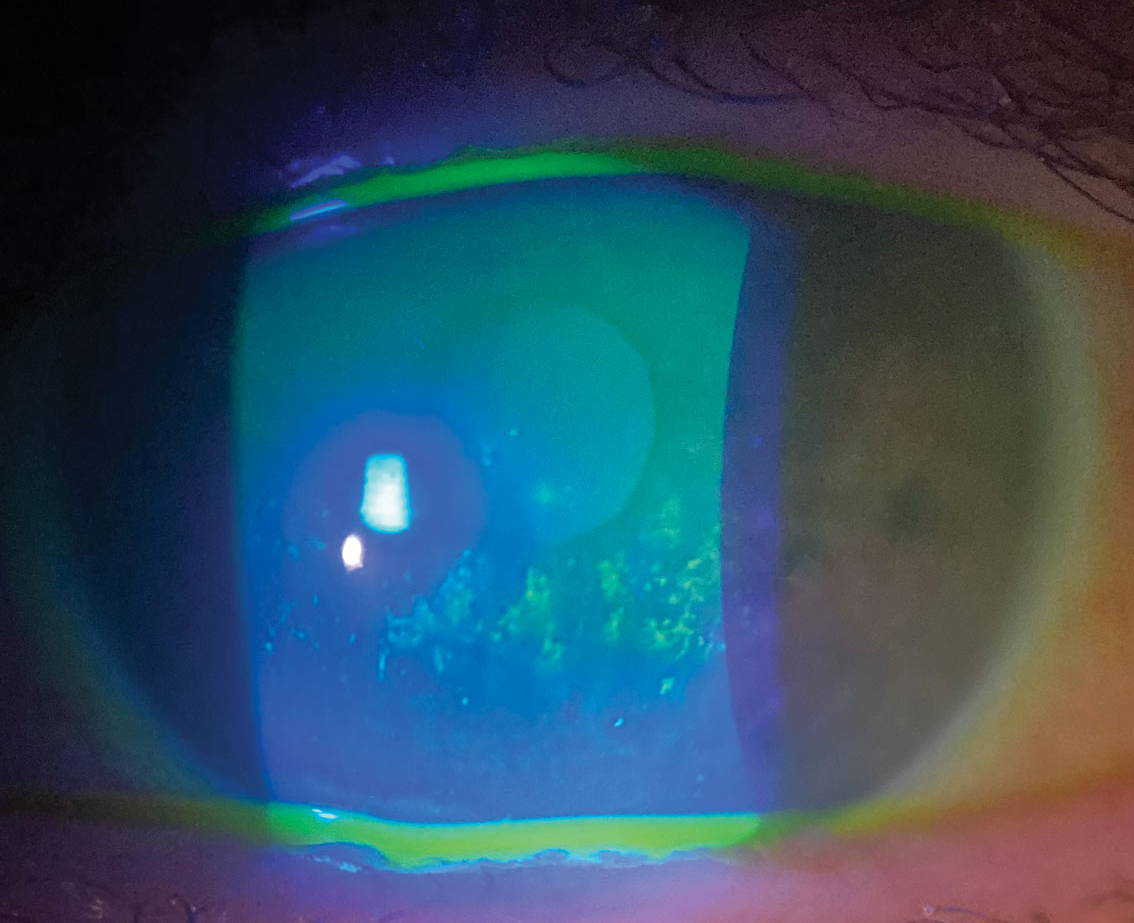 |
The tear film may be disrupted by skin oils, which can lead to a faulty tear film and dry, irritated eyes. Photo: Pam Theriot, OD. Click image to enlarge. |
It’s been proposed that meibomian lipids on the lid margin form a barrier that prevents skin lipids from entering the eye and disrupting tear film stability. What happens, then, when meibomian gland dysfunction upsets this balance by reducing eyelid lipid release? In a presentation yesterday morning at ARVO 2023 in New Orleans, optometrist Jim Kokkinakis from Sydney described his recent investigation of the interaction. Using three volunteer subjects, Dr. Kokkinakis found that applying facial lipid samples to the ocular surface caused tear film disruption, pain, fluorescein staining of the corneal surface and meibomian gland activity. According to the author, this is the first study showing the effects of skin lipid contamination of the ocular surface.
First, the side of the nose of each participant was swabbed to collect lipids found on the skin. Next, the corneal surface, eyelid margin, eyelash base or lacrimal lake were touched with either a cleaned (control) or loaded thread. Aetic acid was used as the control for low pH. Effects on the tear film were visualized using fluorescein or TearView, a new device that shows tear film formation and stability in real time.
Both TearView and fluorescein assessment showed that minimal amounts of skin lipid applied to the cornea, eyelid margin or lacrimal lake spread and destroyed the tear film’s integrity, which was not restored for several blinks. The contamination of the eye with the skin lipid sample also caused pain and staining of the corneal surface. TearView showed that introducing the skin lipid triggered meibomian lipid secretion that displaced the substance, presumably giving protection. In the control subjects, acetic acid—emulating skin pH—destroyed the tear film but did not spread from the site of touch. It caused corneal staining, and the tear film recovered with one blink. Neutral control lipids did not cause any discomfort and did not destroy the tear film but smeared across the tear film during blinking. In contrast, free fatty acids had similar effects to the skin swab substance.
Tear film disruption is most likely due to fatty acids and low pH, which supports the proposed barrier function of meibum on the eyelid margin, the author explained. “This barrier would be compromised by diminished meibomian lipid secretion or excess of skin lipid secretion, which would overwhelm the lid margin barrier. Therefore, skin lipid contamination of the ocular surface might be a common factor for the cause of dry eye in various types of blepharitis, ocular rosacea and meibomian gland dysfunction,” Dr. Kokkinakis concluded in his abstract.
Original abstract content © Association for Research in Vision and Ophthalmology 2023.
Kokkinakis J. In vivo evidence that skin lipids may be a cause of dry eye in humans. ARVO 2023 annual meeting. |


